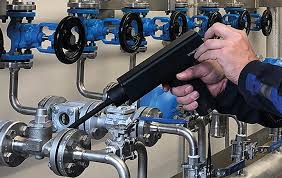
TRAP SURVEY – ANALYZE THE COMPLETE TRAP STATION
Trap surveys are performed using an ultrasonic stethoscope or an infrared thermometer. The thermometer is used to check the temperatures upstream and downstream of the trap (analyze subcooling, analyze back-pressure). The stethoscope is used to analyze how the trap is operating and to determine the leak level. If possible, the Armstrong technician will also observe the trap’s discharge to the atmosphere.
If the trap is operating properly, only a visual inspection of the trap station will be made. If the trap is failed, there will also be an inspection to check whether the surrounding valves are working properly (seized, internal leak, etc.) and an overall recommendation will be made regarding the trap station. In both cases, there will be a visual examination for installation mistakes.
The leak rate for each trap, as well as the associated CO2 emissions, are calculated using a method approved by the United Nations Technical Committee. The formula for computing leaks takes into account the differential pressure, the application, the leak level and the trap’s Cv factor.
In fact, Armstrong International has a complete data base with the Cv’s for all types and brands of traps currently on the market. This database is the culmination of many years of work and research. Using this methodology enables us to make precise estimates not only of the amount of steam that a leaking trap is losing, but also of the CO2 emissions and financial losses related to it.
